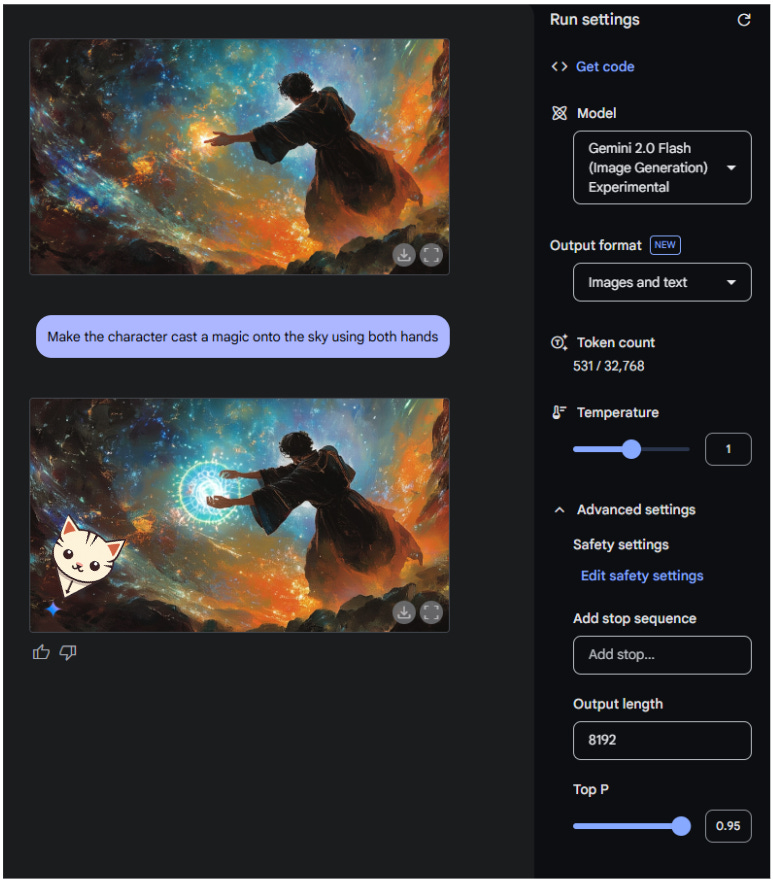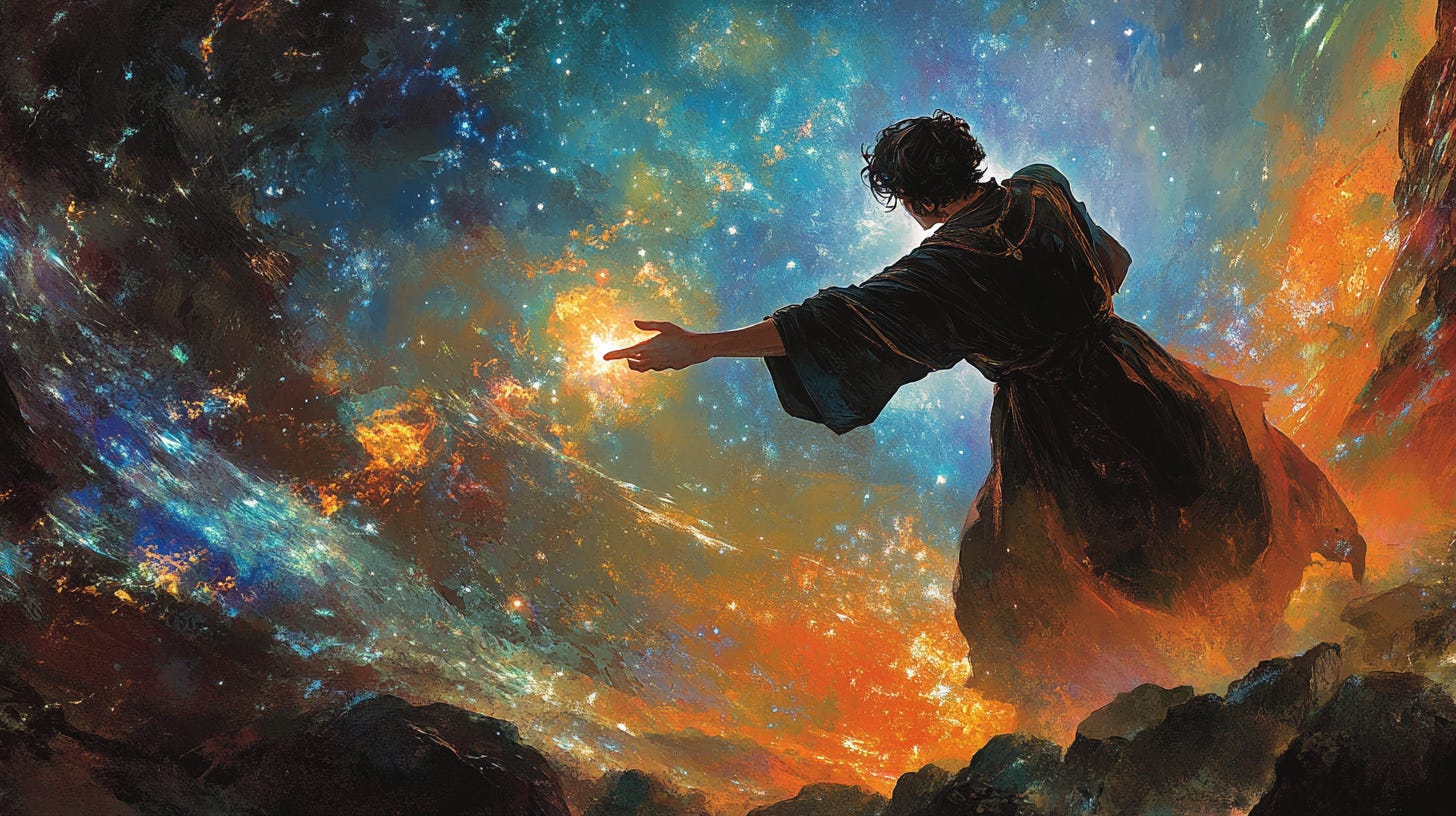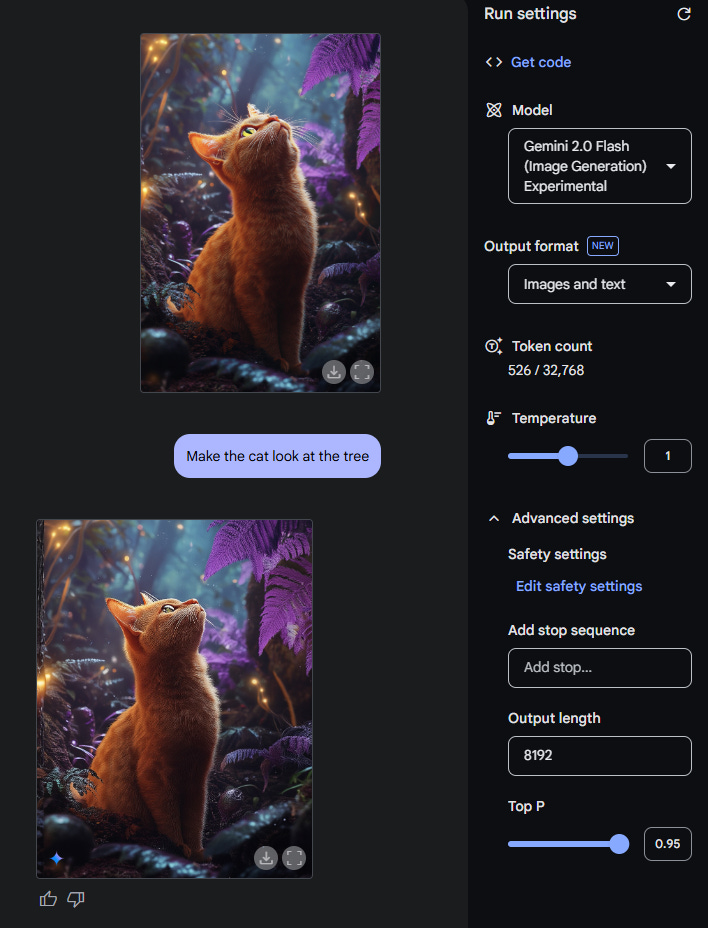I tried Gemini 2.0 Flash (Image Generation) Experimental model and didn't like it. Here's why.
It's interesting but has major drawbacks.
Gemini 2.0 Flash model for image generation
Recently, several articles have been written about Google's Gemini 2.0 Flash experimental model for image generation. The articles strongly promote the model, claiming that it has the potential to revolutionize image creation and even compete with Adobe. They show several impressive applications, including changing model postures, maintaining consistent characters, storytelling, and adding new elements.
So, I tried it.
This is an image I created with Midjourney.
The prompt:
A powerful mage with flowing robes and glowing runes grips the hand of a young man, preventing him from plunging into a swirling abyss. Cosmic mist and arcane energy radiate around them, the scene blending John Harris’ vast dreamlike landscapes, Syd Mead’s futuristic precision, and Frank Frazetta’s raw heroic energy--dynamic motion, cinematic tension, high drama. --ar 16:9 --v 6.1I uploaded it to Google AI Studio to get access to the free "Gemini 2.0 Flash (Image Generation) Experimental" model, which has a rather long name to write and pronounce.
So, let’s call it "Gemini 2.0 Flash" for short.
First, the model generates a useful variation when given the simple instruction to make the character cast magic with both hands. The generated variation is then used in Runway to create a GIF.

The following animation (GIF) was created with Runway. The original image was used as the first frame. The variation generated by Gemini was used as the second frame.

Pretty interesting, isn't it?
Then, I noticed some significant limitations.
First, the generated images include a watermark, specifically a blue star known as the SynthID watermark. This watermark is embedded in the image and may be difficult to remove without violating Google's terms.
Removing it might result in legal issues or account suspension. This is a significant disadvantage because it limits the images' usefulness for practical purposes.
Ironically, some people use the Gemini 2.0 Flash to remove watermarks from images downloaded from stock photo websites - which, of course, is prohibited and illegal!
Another issue is the resolution of the images created by the free model. The resolution is significantly lower than in other models.
For example, images that are typically around 2,000 KB end up being 200+ KB (about 10% of the original size) after generation, drastically reducing the image quality.
This lower resolution can be a significant drawback if you intend to use the images for further processing or in higher-quality projects.
In conclusion, despite the promising features of the Gemini 2.0 Flash experimental model, its limitations make it less suitable for my needs.
The watermark and low resolution are significant drawbacks, and I recommend considering them before using it. Always try it yourself to see if it meets your needs, but it's not for me right now.
Meanwhile, since it's free, let's use it again and complain less.
Here's my Midjourney kitten. And I animate it again using Runway.
Surprisingly the watermark is gone!
I swear! It was not me. Just go to ask Runway why... ohh maybe it’s the cat… not me please...
Cover prompt: A powerful mage with flowing robes and glowing runes grips the hand of a young man, preventing him from plunging into a swirling abyss. Cosmic mist and arcane energy radiate around them, the scene blending John Harris’ vast dreamlike landscapes, Syd Mead’s futuristic precision, and Frank Frazetta’s raw heroic energy--dynamic motion, cinematic tension, high drama. --ar 16:9 --v 6.1
Note: Prompt was generated using MJ Simple Prompt Generator. The blue star was added using Ideogram Canvas.
Related articles
Key takeaways
Google's Gemini 2.0 Flash experimental model for image generation shows promise with impressive features like character consistency and storytelling. However, it has significant limitations, including mandatory watermarks and low-resolution outputs, making it less suitable for many use cases.
I hope you like this article!
Thank you for reading and happy creating!











